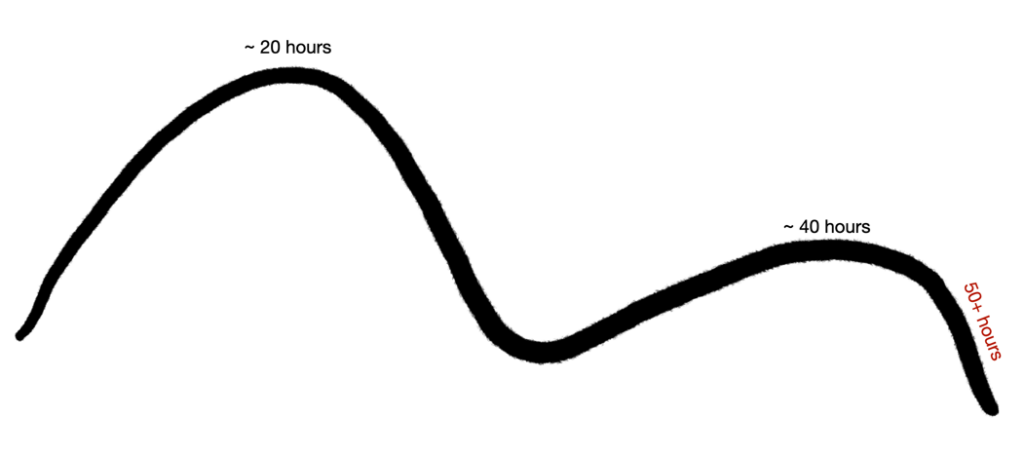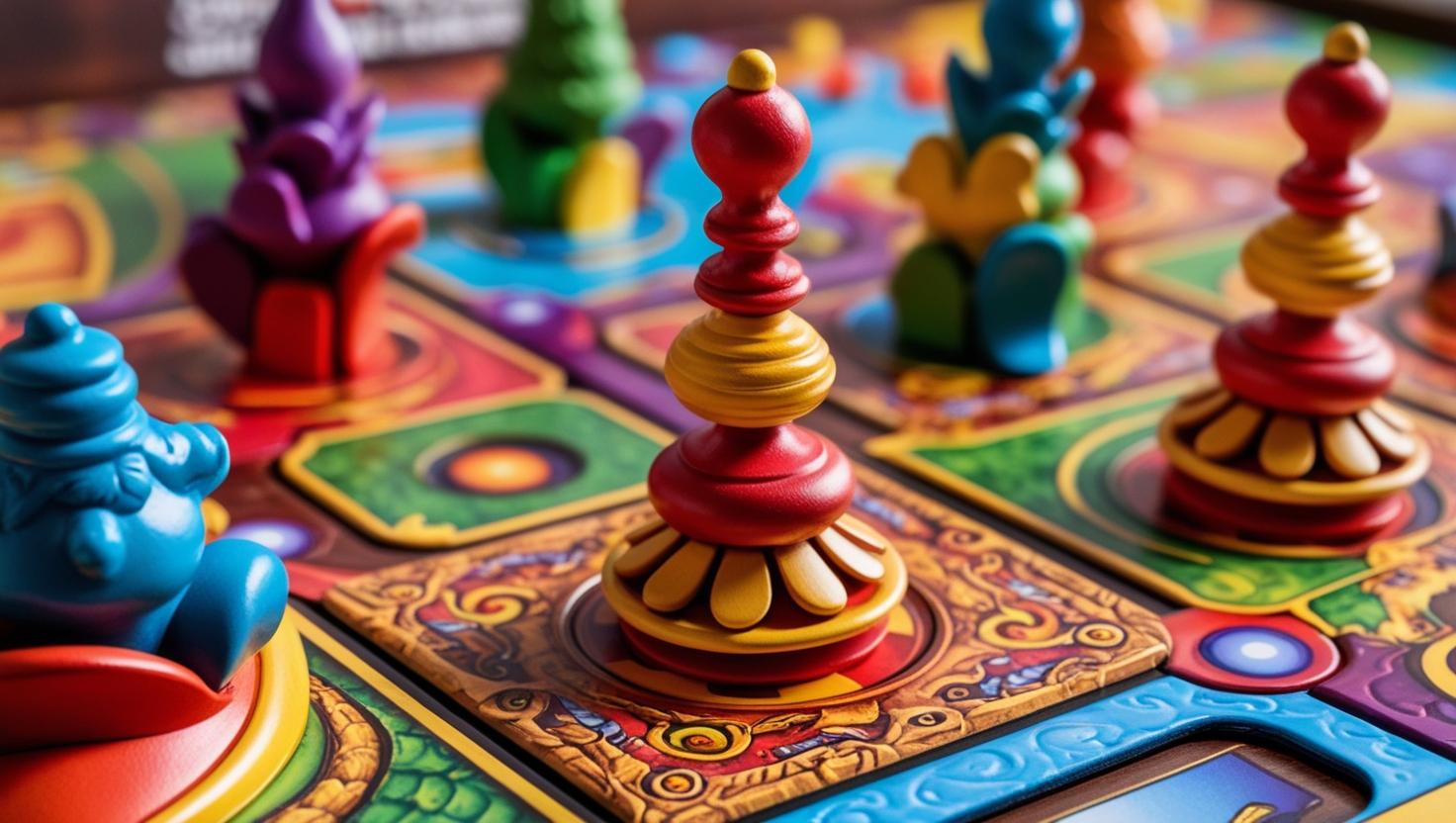Have you ever felt like the harder you work, the less you get done? Whether you’re “grinding” to meet a deadline or determined to complete a task no matter what, it’s not a sustainable long-term strategy. I’ve been there, too. (I might be there now!)
The Science of Stepping Back
John Pencavel, a Stanford researcher, studied this. He found a pattern: working longer hours boosts productivity to a point, but then it drops off dramatically.
The research reveals a clear pattern that looks like a wave or an “M-shaped curve”:

When you work reasonable hours (around 40-50 hours per week), your energy is high, and productivity flows naturally. But push harder into 50+ hours, and you start seeing diminishing returns—more time doesn’t mean more results, justpj more fatigue. Beyond 60 hours, the curve takes a sharp dip. Mistakes increase, and your output per hour actually declines. You’re working longer but producing less.
Even more striking is what Pencavel calls the “lagged effects of long hours.” Those extra hours you work this week create a productivity debt. It will hurt your productivity next week. Workers pushing beyond 53 hours saw their next week’s output suffer noticeably.
The Cost Goes Beyond Productivity
This isn’t about getting things done—it’s about our mental well-being. When we skip rest days and holidays, our productivity plummets. Seven days of work produce only six days of output, meaning that extra day is essentially wasted effort. Meanwhile, our creativity dims, stress accumulates, and our emotional resilience wears thin.
Building Your Rest and Recovery Muscle
The good news? Research from the book “Rest: Why You Get More Done When You Work Less” shows us how to make the most of our downtime. Here’s how to build your R&R muscle:
Design Your “Deep Play” Over Passive Entertainment
Skip the usual holiday TV binges and endless social media. Choose activities that truly restore you.
- Make them mentally absorbing (like learning a new holiday recipe)
- Ensure they offer clear rewards (playing a game with family)
- Connect them to personal meaning (reviving an old family tradition)
Think about a holiday activity from your childhood that made you lose track of time. What elements of that experience could you recreate now, not just as nostalgia, but as a form of engaging rest?
Create Clear Rest Boundaries During Family Time
Research shows that distinct boundaries between work and rest enhance both experiences:
- Set specific times for being fully present with family and friends.
- Communicate these boundaries clearly: “I’m completely offline from December 24-26 for family time.”
- Practice true detachment from work—it’s essential for recovery.
Build in Recovery Rhythms
Recovery isn’t just about time off—it needs structure. Schedule your holiday break with intentional recovery periods:
- Morning walks before family gatherings to boost creativity
- Strategic 20-minute power naps to maintain energy
- Quiet moments between social events for mental reset

The Bottom Line
Taking time to recover over the holidays ensures you:
- Return refreshed and ready to do better work in less time.
- Avoid the burnout and energy dips that waste hours of effort.
- Build sustainable practices for long-term success.
Rest isn’t a luxury—it’s a productivity strategy.
So this holiday season, step back, rest up, and trust the research: You’ll come back stronger, smarter, and ready to crush it in the new year.
